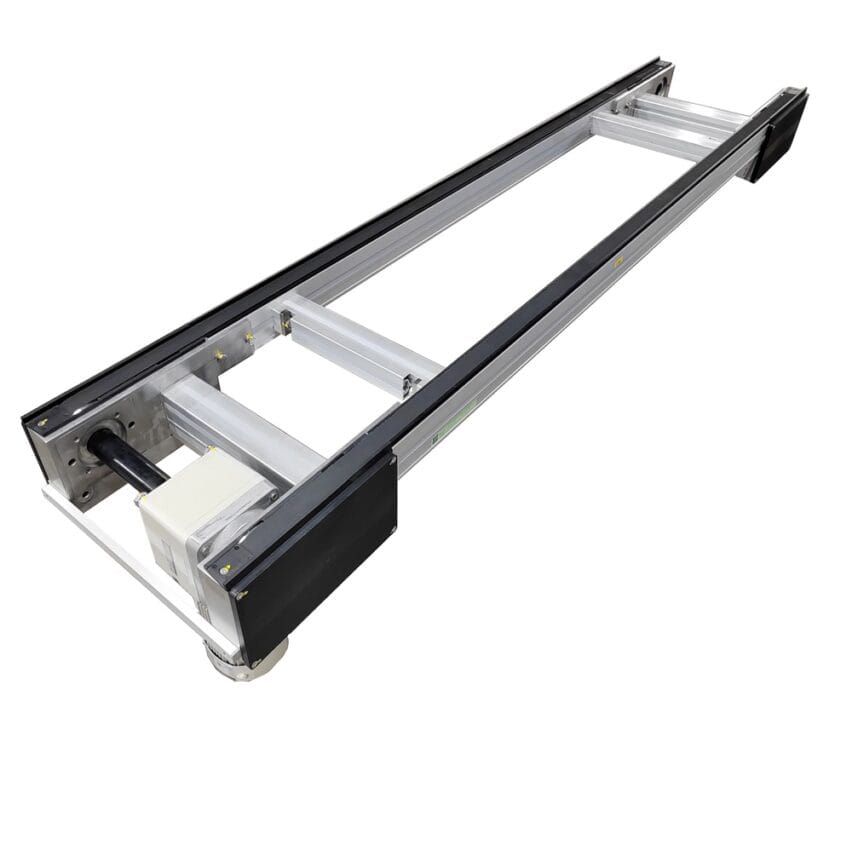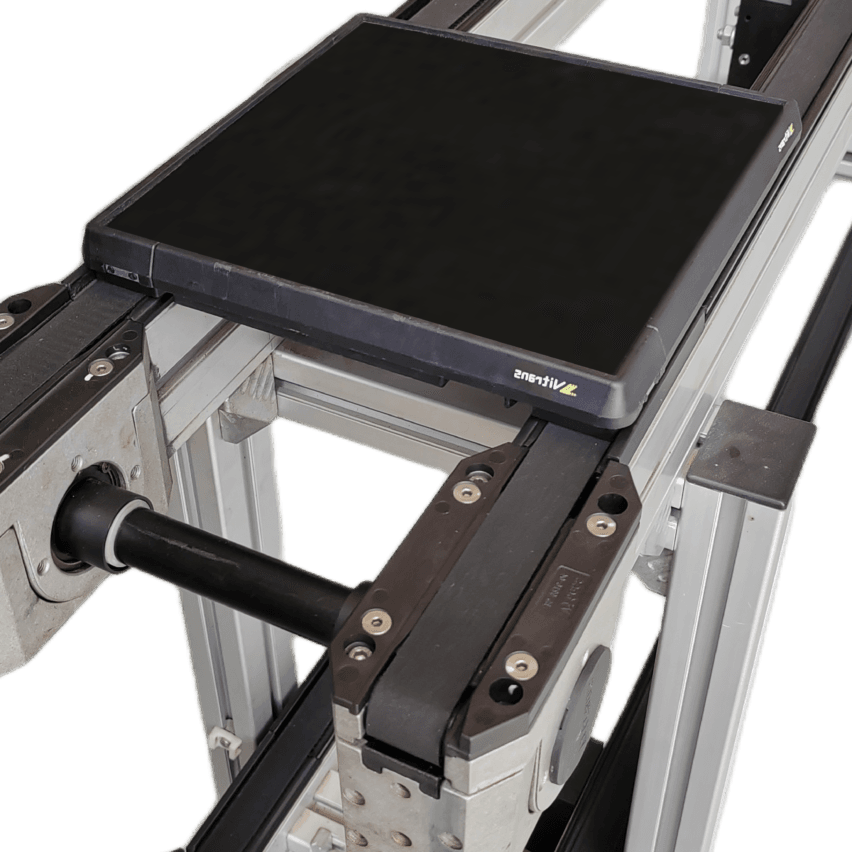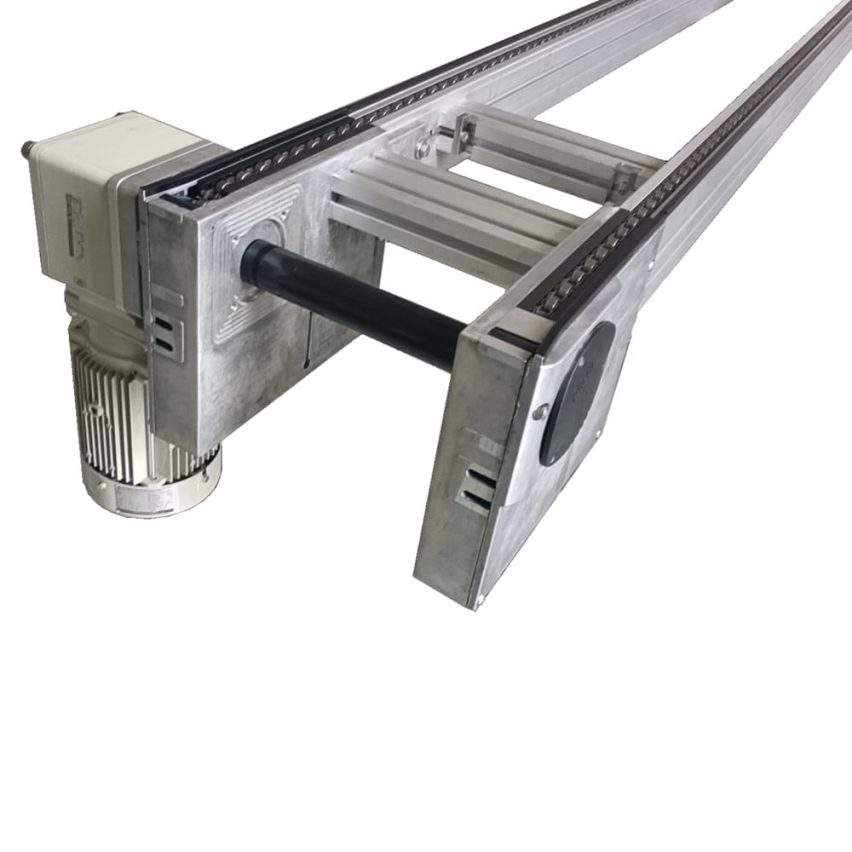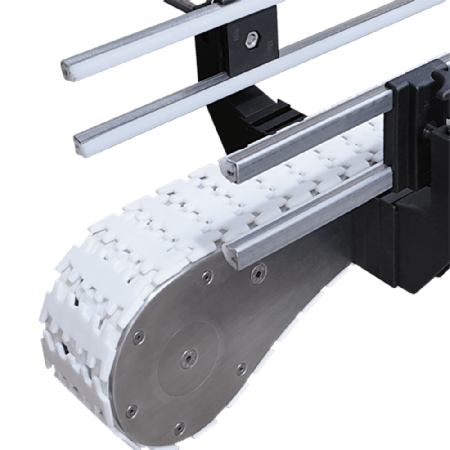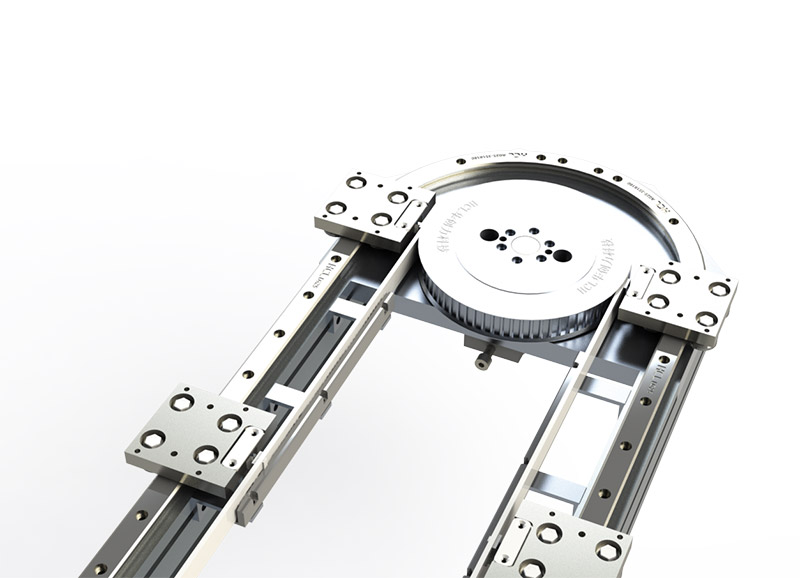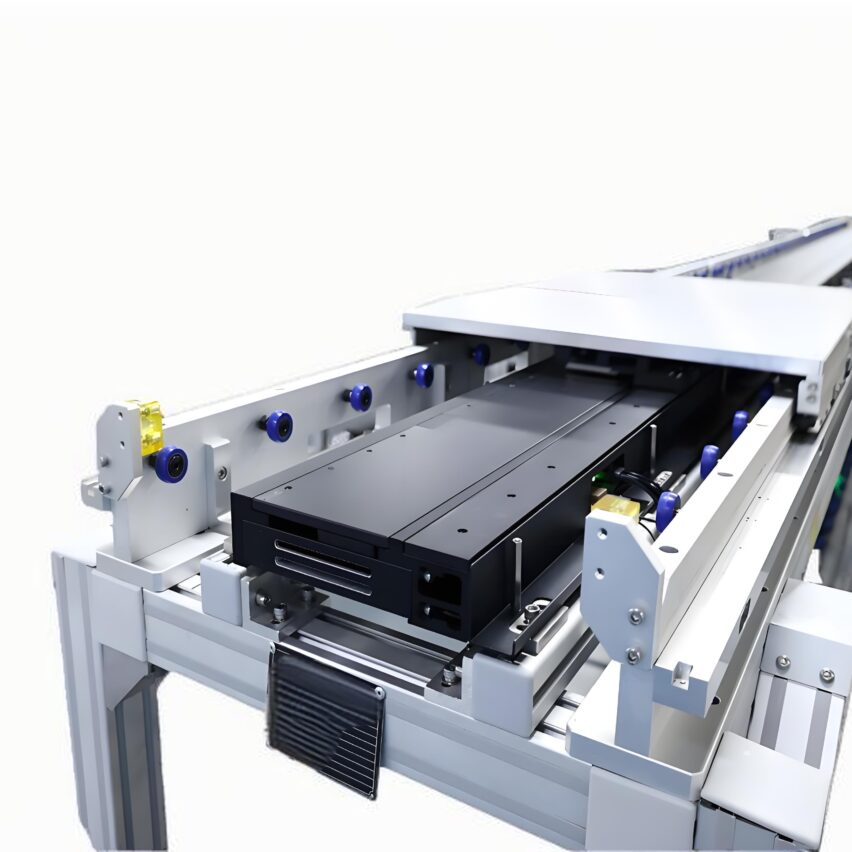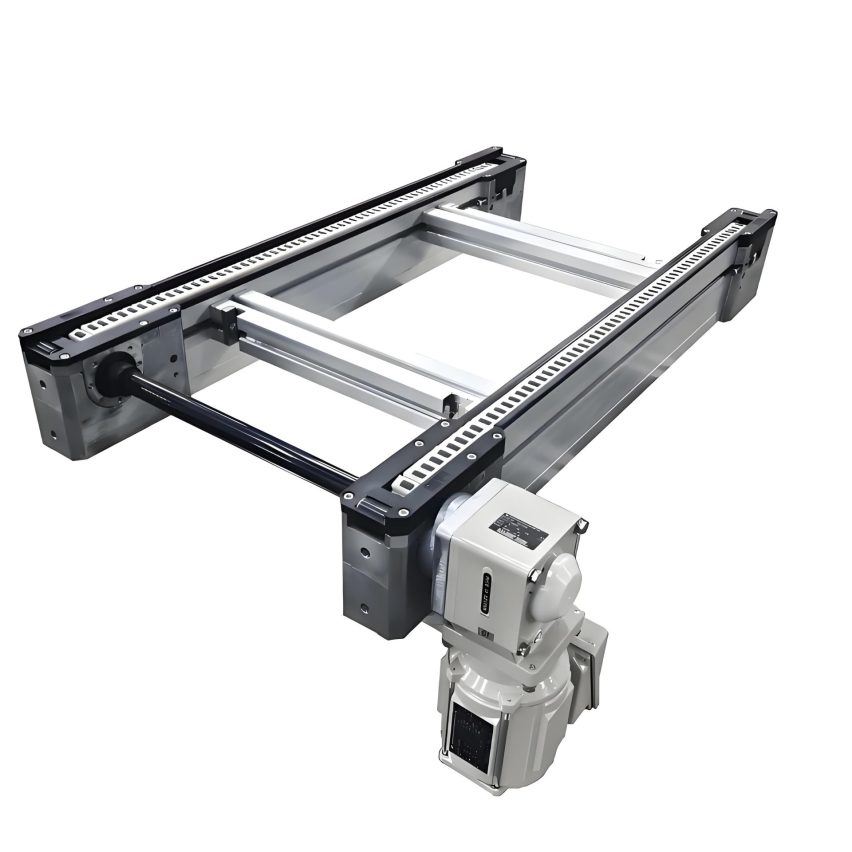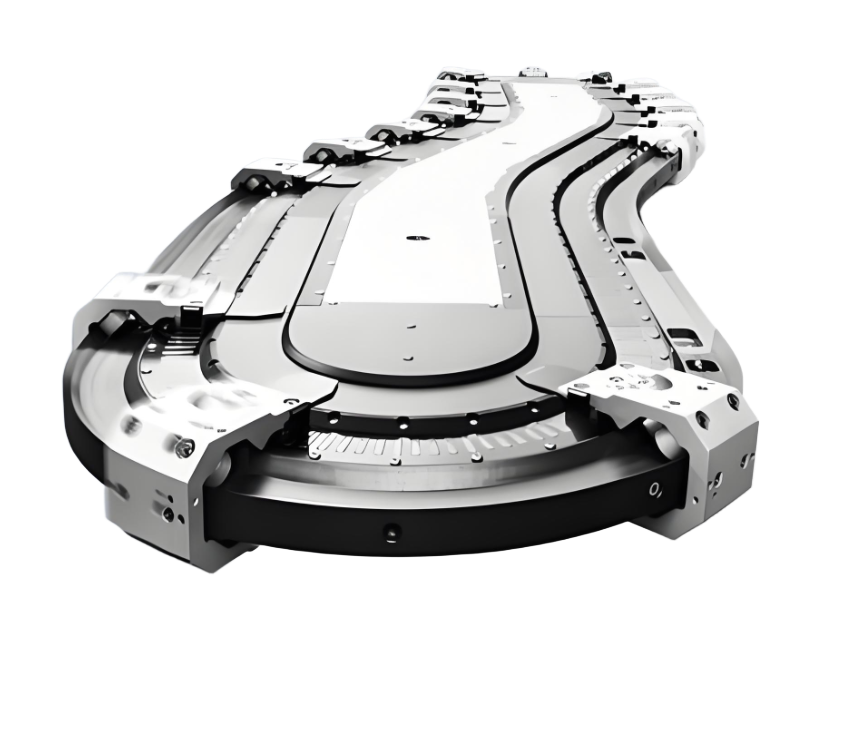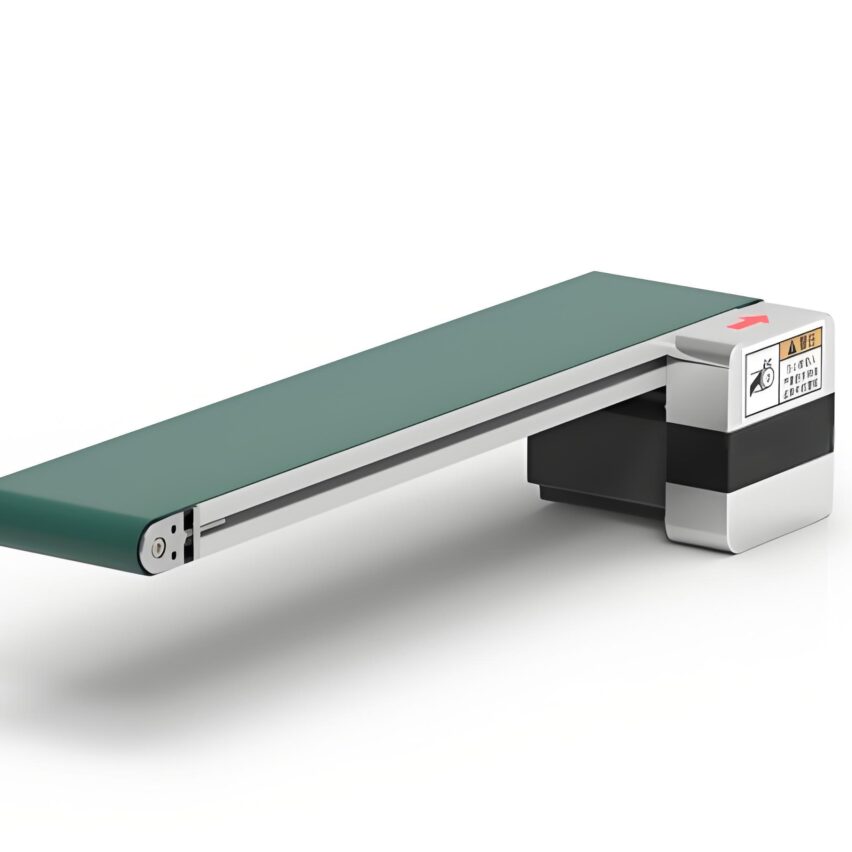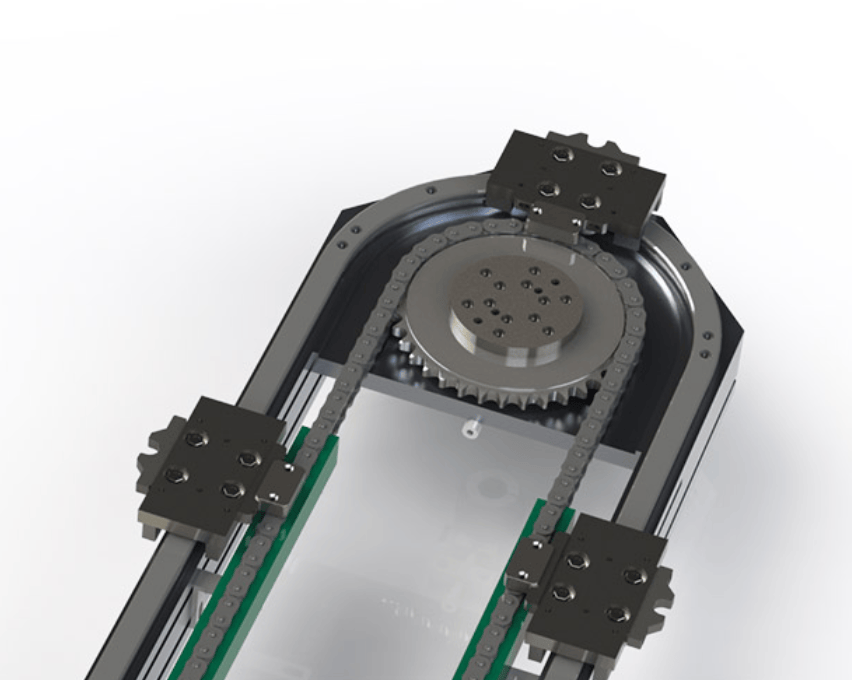I. Principles of space-optimised design: the engineering logic of vertical reuse
The core value of the double reflux multiplier chain is thatEfficient reuse of vertical space. Its operating mechanism is divided into three levels:
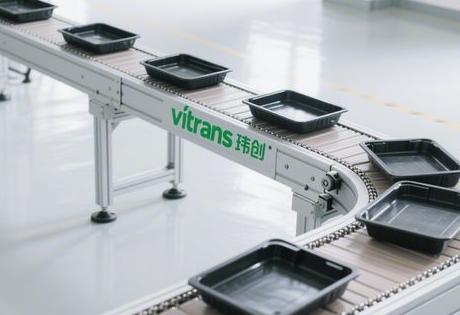
- differential drive: The speed increase of the work plate is realised by the ratio of the roller diameter (D) to the chain roller diameter (d), the speed formula isVcatch sight of in a doorway (old)
=Vcable length (= 1
×(1+D/d)The typical multiplication ratio is 2.5-3 times. - Reflow structure design: After the upper level has been assembled, the unloaded tooling plate is passed through thejacking and panning machine(Cylinder drive + linear guide) Transferred to the lower return line, reducing the 40% flat surface footprint.
- Accumulation control function: Blocking cylinder response time ≤ 0.5 seconds, achieving millimetre-level precision stopping of the workpiece plate, allowing partial pauses without interrupting the whole line operation.
personal viewpoint: The current cushioning design of the board return machine is still a technical pain point. Ningbo Kai Feng 2024 patent adopted by thePolyurethane cushioning modules(absorbing 60% of impact energy) combined with a slide guidance system that reduces the failure rate by 37%, the future needs to be directed to theAdaptive adjustment of hydraulic dampingDirectional upgrades.
II. Guidelines for selecting key parameters: a data-driven decision-making model
(1) The game of multiplication ratio and loading
| Multiplier Chain Type | Applicable Scenarios | risk threshold | cost index |
|---|---|---|---|
| 2.5x speed chain | Automotive parts (≤500kg) | Overload 20% Failure rate ↑30% | 1.0 |
| 3x Chain | Electronics (≤100kg) | Overloaded 30% fracture risk ↑50% | 1.3 |
(2) Golden Ratio of Line Gauge
- width adaptation: 250-900mm (300mm for electronics, ≥600mm for automotive)
- length limit: Single-section drive ≤ 40m (longer length requires segmentation + synchronised control system)
- high degree of optimisation: Standard 750mm ± 250mm, medical scenarios need to match the height of the laminar flow hood
(3) Environmental Adaptation Matrix for Materials
plaintextmake a copy ofEnvironment Chain material Protection programme Life span High temperature (>150°C) → Hardened alloy steel No additional protection required 3 years Humid/dusty → carbon steel + sealed cover Roller dust cover ↑200% Aseptic workshop → 316L stainless steel Airtight isolation chamber 5 years
III. Industry Scene Adaptation Strategy: Pain Points and Solutions
electronics manufacturing(Mobile phone/laptop assembly line)
- Static control: Conductive wheels (resistance ≤ 10⁶Ω) integrated in the tooling board to avoid chip breakdowns
- Quick changeover: Modular fixture for 2-hour product changeover, supports 12 models per day
- Case Effectiveness: Output per unit area increased by 2.1 times after the adoption of a double-layer structure in a factory in Shenzhen.
Automotive heavy-duty assembly(Battery pack/engine)
- Reinforcement of jacking mechanism: Dual-cylinder redundant drive, maintaining 75% capacity in the event of a single failure
- Cross-floor collaboration: AGV docking jacking and panning machine to achieve three-dimensional workshop material flow
Food & Pharmaceuticals
- Self-lubricating chain: Food-grade, maintenance-free solutions that reduce the risk of microbial contamination
- GMP Compliance Design: 316L material + jacking transition bin, cross-contamination rate ↓ to 0.02%
IV. Intelligent control and maintenance: full life cycle cost control
(1) Four-dimensional optimisation of the control system
Image Codegraph LR A[Driver layer] --> B[Variable frequency motors > mechanical speed control] C[Sensing layer] --> D[Photoelectric positioning error ±0.2mm] E[Executive level] --> F[Dual-channel interlock disconnect] G[Data layer] --> H[PLC predictive maintenance](2) Maintenance economy formula
Annual maintenance cost = (0.15 x equipment cost) + (downtime loss x failure rate)
- Innovative programmesSelf-sealing quick-change couplings make hydraulic maintenance time from 90 minutes to 15 minutes, saving ¥ 80,000 per year.
Exclusive data: A new energy battery factory's actual test shows thatPredictive maintenance system(Roller vibration sensors + AI analysis) resulted in bearing replacement cycle prediction accuracy of 921 TP3T, 801 TP3T reduction in unplanned downtime, and a reduction in ROI cycle time to 11 months.
Ask Yourself: The Ultimate Three Questions for Selection
Q1: When should I choose a double layer over a single layer of ring doubler chain?
A: Three conditions need to be met at the same time:

- Plant rent > 800 RMB/m2/year (incremental cost of steel structure to be recovered through 18 months)
- Daily output >5000 pieces (avoid idle equipment)
- There is a need for heavy parts (>300kg) or cross-floor transfer.
Q2: How to correct the load bearing of triplex chain in wet environment?
A: Load bearing needs to be based on nominal value x attenuation factor:
correction load=Nominal load×e(-0.03×humidity level
Example: Nominal 300kg @ humidity 70%, actual load limit ≈ 240kg
Q3:哪些信号预示Speed Chain Selection失误?
A: Three major danger signs:
- Board jitter >±0.3mm (electronic patch defect rate soars)
- Chain tension adjustment >2 times per month (indicates structural deformation)
- Reversing time of plate return machine > 3 seconds (beat can't match 60JPH)
Future Evolution: Intelligence and Limit Breaking
Carbon Fibre Rollerof laboratory data reveals new possibilities:
- Reduced weight 68%, growth rate ratio exceeds 4.2 times limit
- Noise reduced from 82dB to 71dB (at 3.5x speed)
However, the bottleneck for mass production remains: the current cost is seven times that of steel parts, and it is necessary to wait for theComposite material injection moulding processBreaking.personal prediction: After 2026.Adaptive Tensioning System(Strain gauge + AI real-time regulation) will become the standard for high-end production lines, energy consumption will be further reduced by 17%, chain life will be extended by 3.2 times, and the efficiency ceiling will be redefined.

